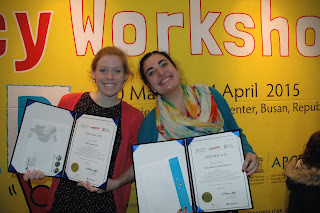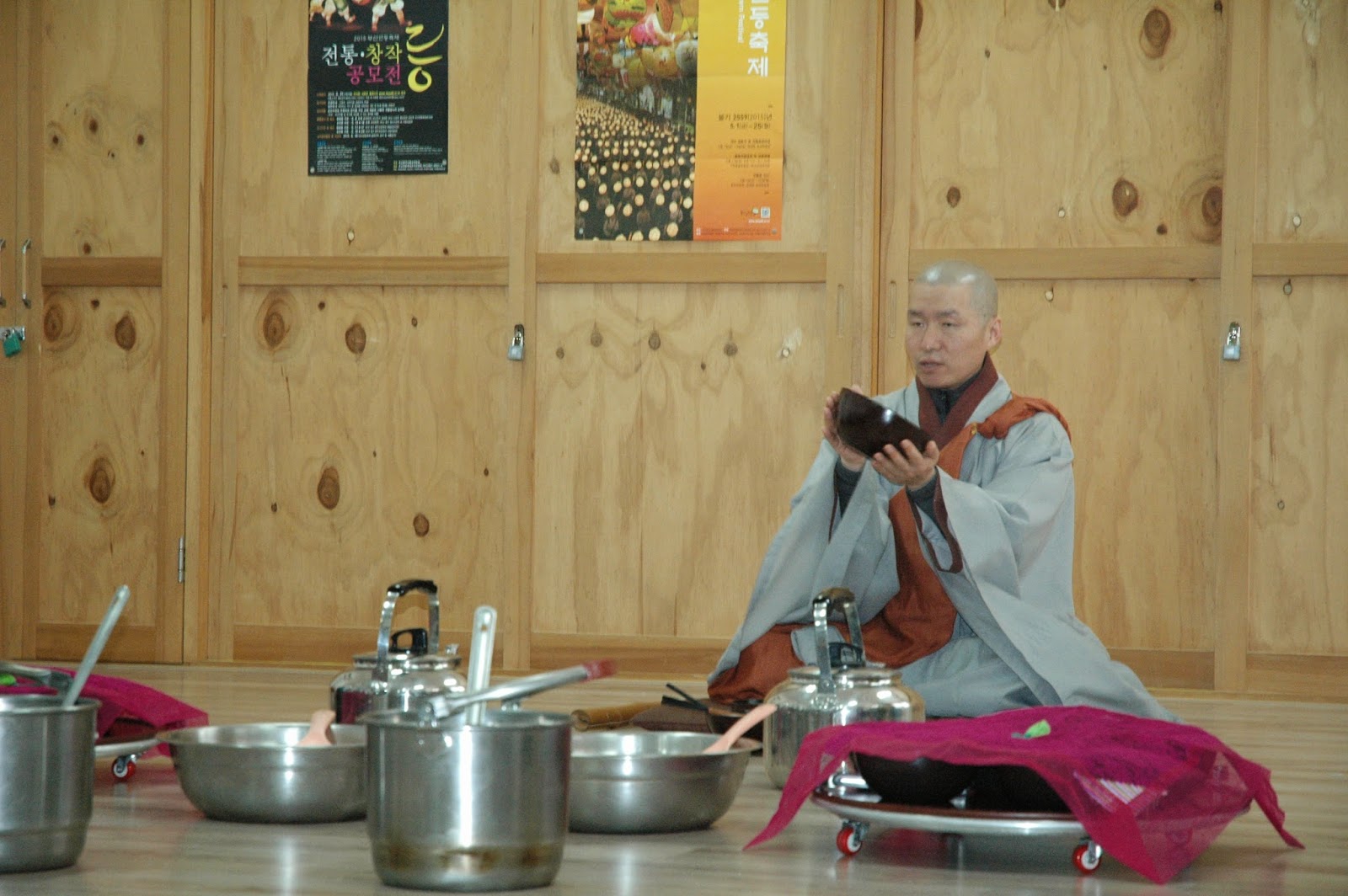Friday the third of April... the last day of the workshop on GCED in Busan. It took me a while to write about this day... It gives me a bad feeling, it makes me sad but it also encourages me to stay in touch with everyone from the workshop.
In the morning we had to present our final advocacy strategy. As we (Europe and North-America) wanted to be as creative as possible, we decided to do a role play about our toppic bullying. We outlined the context, the actors and stakeholders that are important to our strategy. What we want to achieve, who we want to reach and how we would do this.
 |
| Talking about bullying with "my" pupils |
 |
| Trying to find solutions, how we can stop bullying. |
After every group presented their amazing advocacy strategies, we had the chance to have a short dialogue with mister Se Yeon Kim, member of the Korean National Assembly. Mister Se Yeon Kim, referd to the film inception when he got the question, how we can spread the thought that we all belong to the same community. He told us to be the seeds of thought and change. Set your goal and share that goal with your friends and family. This leads us back to day 1 of the workshop, when doctor Utak Chung emphasized the importance of think - share - act.
.JPG)
At the end of the morning we did a short general reflection and synthesis about the workshop. We also had to say who we wanted to work together with, by the end of the reflection, we were all connected to each other...
Not sure if we actually came to a general reflection and synthesis? We were all too emotional, not ready to finish the workshop yet and definitely not ready to say goodbye.
Before we went for lunch, we officially got our certificate of the Global Youth Advocacy Workshop on GCED.

 |
| With Misses president of Tunisia Syrine Rekhis |
 |
| With Misses president of Argentina Melisa Trad |
In the afternoon we got some free time to discover Busan in groups of four. During the quick sightseeing we had to make sure (and prove with a picture) we tried some typical Korean street food, we found the entrance of the local market and that we found something of our own culture. Think we did pretty well:
 |
| At the entrance of the local market |
 |
| Eating typical street food; sweet potato sticks |
 |
| Found something of my own culture ;) |
Enjoy some more impressions of Busan:
 |
| We finished this amazing week in an amazing restaurant! |
And finally for the people who don't like to read, you can get a general overview of the workshop in the following video. Please take a good look at minute 8:34.
As no one wanted to say goodbye, most of us stayed up all night. I also didn't want to lose any moment to keep talking, keep discussing, keep exchanging thoughts with each other. It was a short night, but probably the most interesting night. At 5am I had to leave to the airport...
It wasn't goodbye, but only the beginning of a new challenge with lots of new friends and inspiring young people all over the world.
.JPG)
.JPG)
































































